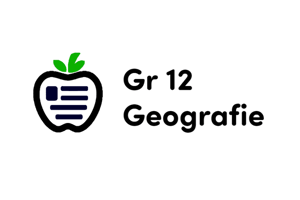Podcast
Questions and Answers
What is Urban Morphology?
What is Urban Morphology?
- Urban planning regulations
- The social interactions within urban areas
- The study of the physical form and structure of urban places (correct)
- The economic activity of a city
What defines an Agricultural Village?
What defines an Agricultural Village?
A relatively small village, where most of the population was involved in agriculture.
What is Agricultural Surplus?
What is Agricultural Surplus?
Agricultural production in excess which the producer needs for his own sustenance for his family and then sold for consumption by the market.
What is a Trade Area?
What is a Trade Area?
What is Central Place Theory?
What is Central Place Theory?
What does Functional Zonation refer to?
What does Functional Zonation refer to?
What is a Central Business District (CBD)?
What is a Central Business District (CBD)?
What is Suburbanization?
What is Suburbanization?
What does the Concentric Zone Model illustrate?
What does the Concentric Zone Model illustrate?
Who is the Leadership Class?
Who is the Leadership Class?
What is Mesopotamia known for?
What is Mesopotamia known for?
When does the Nile River Valley date back to in terms of urban development?
When does the Nile River Valley date back to in terms of urban development?
When was the Indus River Valley established as an urban hearth?
When was the Indus River Valley established as an urban hearth?
What is notable about the Huang He and Wei?
What is notable about the Huang He and Wei?
What are Edge Cities?
What are Edge Cities?
What does the Griffin-Ford Model represent?
What does the Griffin-Ford Model represent?
What is the McGee Model?
What is the McGee Model?
What are Shantytowns?
What are Shantytowns?
What is Redlining?
What is Redlining?
What is Blockbusting?
What is Blockbusting?
What is meant by Site in urban geography?
What is meant by Site in urban geography?
What is meant by Situation in urban geography?
What is meant by Situation in urban geography?
What is Urban Sprawl?
What is Urban Sprawl?
What is a city?
What is a city?
What does Urban mean?
What does Urban mean?
What is Social Stratification?
What is Social Stratification?
What is the First Urban Revolution?
What is the First Urban Revolution?
Flashcards are hidden until you start studying
Study Notes
Urban Studies Concepts
- Urban Morphology: Focuses on the physical layout and design of urban environments.
- Agricultural Village: Small communities primarily dedicated to farming; agriculture is central to the village's existence.
- Agricultural Surplus: The excess of crop production that exceeds personal consumption, allowing for sale in the market.
- Trade Area: Regions where substantial trade activities are conducted, influencing local economies.
Theoretical Models in Urban Geography
- Central Place Theory: Proposed by Christaller; explains the distribution and functional organization of central places in an urban hierarchy.
- Functional Zonation: The systematic partitioning of a city into various sectors or zones for specific functions.
- Concentric Zone Model: A structural diagram depicting American cities with five concentric zones radiating from a central point.
Urban Development Phenomena
- Central Business District (CBD): The core area in a city characterized by high land costs, concentrated businesses, and tall buildings.
- Suburbanization: Movement of affluent populations from urban centers to suburban areas, often to escape pollution and declining urban conditions.
- Edge Cities: Emerging centers of economic activity at the periphery of urban areas, indicating shifts in urbanization away from traditional city centers.
Historic Urban Hearths
- Mesopotamia: Recognized as the first urban hearth, with significant cities like Ur and Babylon, originating around 3500 BCE in the Fertile Crescent.
- Nile River Valley: Second major urban hearth with settlements dating back to 3200 BCE.
- Indus River Valley: Third urban hearth, dating to approximately 2200 BCE.
- Huang He and Wei Rivers: The fourth urban hearth established along these rivers in present-day China.
Urban Challenges and Issues
- Shantytowns: Informal settlements characterized by unplanned slum development on city outskirts.
- Redlining: A discriminatory practice limiting access to housing for minorities in predominantly white neighborhoods through financing restrictions.
- Blockbusting: Dramatic demographic shifts occur in neighborhoods as real estate agents incite fears of decline to promote racial integration.
Geographical Models
- Griffin-Ford Model: A representation of Latin American cities blending traditional cultural elements with modern globalization influences.
- McGee Model: A description of urban land use patterns prevalent in medium-sized Southeast Asian cities.
Urban Characteristics
- Site: Refers to the specific physical characteristics and attributes of a location, including geography and resources.
- Situation: Involves a place's external attributes, assessing its relative positioning in relation to other areas.
- Urban Sprawl: The uncontrolled expansion of urban areas into rural regions, often leading to challenges in planning and infrastructure.
Societal Structures
- Social Stratification: The division of society into hierarchical layers based on criteria such as income, occupation, and social status.
Historical Events
- First Urban Revolution: Transition towards more complex societies marked by the formation of urban centers and developed social hierarchies.
Studying That Suits You
Use AI to generate personalized quizzes and flashcards to suit your learning preferences.




